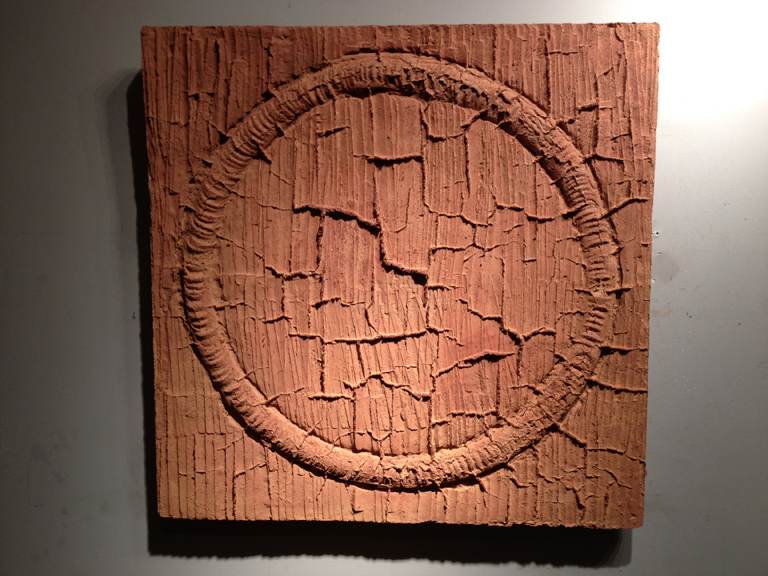Interview
Consenses Interview with Sally Taylor:
Your Name: Thomas Sayre Where you live: Raleigh, North Carolina Where you came from: I am a preacher’s kid from Washington, D. C. with summers on Martha’s Vineyard Your Medium: Earthcast Concrete Name of your work: Pathway Dimensions: (Height, length, width & weight) 30” x 30” x 2” – 68 lbs. Price: Wholesale (how much would your …. Be to buy?) $1,850.00
What made you want to participate in this project? I participated because my cousin, Sally, asked. I also thought it would be an adventure. I like the idea of what my youngest daughter called “art tag”. The process reminds me of Andre Breton’s parlor game called the “Exquisite Corpse” popular with the surrealists of the 1920s in Paris.
Without going back to look at the … what do you remember about it? I received a short film which depicted an individual in a large, industrial space who used a large metal “hula-hoop” to propel himself – often rapidly through the space by becoming the “spokes” with his body of the shiny metal wheel. I remember thinking about the kind of marks this acrobatic gyration might make on a floor of softer material than the warehouse concrete floor. What tracks would this human gyroscope make?
What did you title your work and why? The piece is about the imagined pathway the film depicted. Additionally, the piece gives evidence of the pathways made in the earthen mold as the water evaporates leaving pathways of cracks.
How do you normally create? How was this experience different? My work is a direct response to a physical site which often has cultural and social meanings associated with it. The work is very specific to the particularities of place. In this project, the “site” existed in the video I received. The piece I produced is a direct response to thinking about the tracks which the human propelled hoop device made on the floor it rolled on. I was interested in the dance of the precision of the industrial space and the serendipitous wiggles, movements, and sudden turns which would all be apparent on the floor if the floor were able to somehow record the path of the human gyroscope.
What techniques/tools did you use to help you express your interpretation? I used a modification of a technique called earth casting which I have developed over the last decade and a half. In this case, I used mud from our wonderful North Carolina clay soil as a mold. I rolled a device over the mud leaving a circular impression. I then encouraged the mud to dry out which, as the moisture leaves, causes serendipitous cracking of the mud. Just as there was a beautiful balance between the stark industrial space and the quirky gyrations of the human-driven hula-hoop, there is, similarly, a balance between the geometry of the circle and the random lines of cracking.
Are there certain choices you made which mean something specific to you that the observer might not know? I chose to make the piece an earthcasting. Inherent in this method of making is a distinct balance between human-made and nature-made. Each earthcasting strikes a unique balance between human intention and the grain of nature which, in my view, is the basis of most human endeavor worth doing.
Extra credit: Did you enjoy this project? More you want to say about your experience? I enjoyed the communication with the other artists in the chain that I was a part of. Not knowing who any of the artists were or what they produced, I imagined singing harmony with a chorus of silent but powerful voices.
